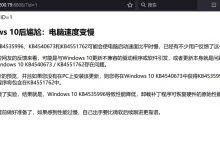备注:测试数据库版本为Oracle 11g R2
如需要scott用户下建表及录入数据语句,可参考:
scott建表及录入数据sql脚本
这个blog我们来聊聊Oracle with 语句
对于逻辑复杂的sql,with可以大大减少临时表的数量,提升代码的可读性、可维护性
语句结构:
with subquery_name1 as (subquery_body1),subquery_name2 as (subquery_body2)...select * from subquery_name1 a, subquery_name2 bwhere a.col = b.col....
优势
– 代码模块化
– 代码可读性增强
– 相同查询唯一化
#一.提升代码的可读性和可维护性
需求:求每个部门的平均工资,以及剔除薪资低于1000的实习人员之后的平均工资
--求每个部门的平均工资,以及剔除薪资低于1000的实习人员之后的平均工资--主查询的from后面跟了2个临时表,程序可读性不佳select d.deptno, tmp1.avg_sal avg_sal1, tmp2.avg_sal avg_sal2from dept dleft join (select e1.deptno, round(avg(nvl(e1.sal, 0)), 2) avg_salfrom emp e1group by e1.deptno) tmp1on d.deptno = tmp1.deptnoleft join (select e1.deptno, round(avg(nvl(e1.sal, 0)), 2) avg_salfrom emp e1where e1.sal > 1000group by e1.deptno) tmp2on d.deptno = tmp2.deptno;--求每个部门的平均工资,以及剔除薪资低于1000的实习人员之后的平均工资--2个临时表的定时语句通过with封装成子查询了,程序可读性增强with tmp1 as(select e1.deptno, round(avg(nvl(e1.sal, 0)), 2) avg_salfrom emp e1group by e1.deptno),tmp2 as(select e1.deptno, round(avg(nvl(e1.sal, 0)), 2) avg_salfrom emp e1where e1.sal > 1000group by e1.deptno)select d.deptno, tmp1.avg_sal avg_sal1, tmp2.avg_sal avg_sal2from dept dleft join tmp1on d.deptno = tmp1.deptnoleft join tmp2on d.deptno = tmp2.deptno;
SQL> --求每个部门的平均工资,以及剔除薪资低于1000的实习人员之后的平均工资SQL> --主查询的from后面跟了2个临时表,程序可读性不佳SQL> select d.deptno, tmp1.avg_sal avg_sal1, tmp2.avg_sal avg_sal22 from dept d3 left join (select e1.deptno, round(avg(nvl(e1.sal, 0)), 2) avg_sal4 from emp e15 group by e1.deptno) tmp16 on d.deptno = tmp1.deptno7 left join (select e1.deptno, round(avg(nvl(e1.sal, 0)), 2) avg_sal8 from emp e19 where e1.sal > 100010 group by e1.deptno) tmp211 on d.deptno = tmp2.deptno;DEPTNO AVG_SAL1 AVG_SAL2------ ---------- ----------30 1566.67 169020 2175 2518.7510 2916.67 2916.6740SQL> --求每个部门的平均工资,以及剔除薪资低于1000的实习人员之后的平均工资SQL> --2个临时表的定时语句通过with封装成子查询了,程序可读性增强SQL> with tmp1 as2 (select e1.deptno, round(avg(nvl(e1.sal, 0)), 2) avg_sal3 from emp e14 group by e1.deptno),5 tmp2 as6 (select e1.deptno, round(avg(nvl(e1.sal, 0)), 2) avg_sal7 from emp e18 where e1.sal > 10009 group by e1.deptno)10 select d.deptno, tmp1.avg_sal avg_sal1, tmp2.avg_sal avg_sal211 from dept d12 left join tmp113 on d.deptno = tmp1.deptno14 left join tmp215 on d.deptno = tmp2.deptno;DEPTNO AVG_SAL1 AVG_SAL2------ ---------- ----------30 1566.67 169020 2175 2518.7510 2916.67 2916.6740
#二.with递归
用with递归构造数列
--用with递归构造1-10的数据with c(n) as(select 1 from dual union all select n + 1 from c where n < 10)select n from c;
SQL> --用with递归构造1-10的数据SQL> with c(n) as2 (select 1 from dual union all select n + 1 from c where n < 10)3 select n from c;N----------1234567891010 rows selected
用with递归构造级联关系
with emp2(ename,empno,mgr,lvl)as(select ename, empno, mgr, 1 lvl from emp where mgr is nullunion allselect emp.ename, emp.empno, emp.mgr, e2.lvl+1from emp, emp2 e2where emp.mgr = e2.empno)select lvl,lpad(\'*\' ,2*lvl, \'*\')||ename nmfrom emp2order by lvl,ename/
SQL> with emp2(ename,empno,mgr,lvl)2 as3 (select ename, empno, mgr, 1 lvl from emp where mgr is null4 union all5 select emp.ename, emp.empno, emp.mgr, e2.lvl+16 from emp, emp2 e27 where emp.mgr = e2.empno8 )9 select lvl,10 lpad(\'*\' ,2*lvl, \'*\')||ename nm11 from emp212 order by lvl,ename13 /LVL NM---------- --------------------------------------------------------------------------------1 **KING2 ****BLAKE2 ****CLARK2 ****JONES3 ******ALLEN3 ******FORD3 ******JAMES3 ******MARTIN3 ******MILLER3 ******SCOTT3 ******TURNER3 ******WARD4 ********ADAMS4 ********SMITH14 rows selected
 爱站程序员基地
爱站程序员基地


